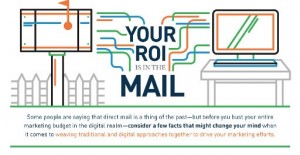For decades, incentive strategy has been used to influence positive behaviors in the channel that help drive more sales. Although “more sales” may be the key destination, the road to getting there may be blurry. Too often, channel professionals may find themselves jumping from the broad goal (like “more sales) straight down to a narrow tactic to get them there (like adding this tool; launching this campaign; adding this reward.)
Overlooked in strategy may be the avenues that lie in between the high-level goal and the granular activities… Enter the five E’s of channel strategy. These points serve as a snackable checklist to help determine if your channel strategy is best positioned to drive more sales.
Evaluate
Sometimes a key goal for a program strategy is simply to develop a key goal. Some incentive program administrators may have a clear view of program performance as well as the areas that need improvement. For others, a clearer vision may be required. Deep program evaluation serves as a diagnostic test in uncovering where a program currently is relative to where it needs to be. Analysis can uncover derivative objectives of the “more sales” goal, which can drastically influence how you arrive there.
Consider looking within the program at channel behavior and whether the program is getting attention or if your partner population lacks loyalists. Look outwardly as well, at the competitive landscap for example, including the programs that your competitors are running to your partners. What’s the channel partner market share look like? Which partners are you NOT currently in contact with, but should be. How big is that population?
Evaluating many aspects in and around a program helps appoint channel professionals with the right knowledge foundation to build key catalysts of change into their strategies.
Enroll
Sometimes a “lack of sales” challenge can actually be a “lack of partners” challenge; that is, a demand for more new active partners. If evaluation uncovers that there exists a healthy population of partners out there who have yet to register or participate in your program, then improvement can be made by applying focus and investing into enrollment strategies.
Rather than strategy focus being isolated to squeezing more and more selling activity out of existing active partners, effect partner recruitment in the strategy can move the needle further.
Channel professionals favor a blend of mediums for partner recruitment and onboarding – like leveraging Field Sales, Marketing, and Referrals. Each approach should include clear and engaging content to describe the program, it’s benefits, and how to enroll.
Engage
In the context of incentive programs, activity equals sales. The more you can engage an audience to become more active, the better positioned a program is to drive more revenue.
Engagement is a concept that can take many elusive forms, but with respect to channel incentive program engagement, it’s as direct as “more program participation.” This can be measured by indicators like program logins, the ratio of those enrolled in your program to those who have submitted claims, and repeat claims.
The key question on engagement is: “are my partners selling at maximum potential?” Inactive and under-active participants can be turned active and even loyal when the right strategy is executed to engage them.
Partners need to be excited about the program being offered and the incentives included within it. So it’s imperative to question all aspects of the program that could be contributing to participation attractiveness.
Here are some key topics and strategic questions to help Engagement:
- Program Personalization – Is the experience that the participant is getting in the program relevant to them? Does it include products not sold by them? Incentives they aren’t eligible for? Communications that don’t pertain to them?
- Incentive Attractiveness – Are program requirements achievable? Too lofty based on that partners standard activity? Are the reward options desirable? Are the program rules confusing?
- Program Usability – If you’re running your program via software, is it user-friendly? Can partners access it easily (for example, on mobile if they work mostly in the field)?
- Partner Communication – Are partners keeping the program in mind? Are they being reached on a regular basis? Do they have the appropriate selling tools?
- Partner Surveying – Do partners have a voice to communicate things they may not like with the program, issues they’ve encountered, and other valuable intel?
- Program Personalization – Is the experience that the participant is getting in the program relevant to them? Does it include products not sold by them? Incentives they aren’t eligible for? Communications that don’t pertain to them?
Educate
Incentive programs shouldn’t only be about running incentives- having a program bridges a gap between OEM and Partner, which opens up the door for more and better sales training.
No matter how attractive the program and the incentives within may be, lack of education around the product, it’s values, and the brand can sabotage selling ability, making sales competency a key value driver.
Partner training is a good example of a leading influencer to a sale, versus a lagging indicator like the transaction itself. A good program will blend the ways to earn beyond the sale and into the factors that influence one.
Forrester’s 2020 State of Channel Partner Incentives study reported a triple-digit percentage point increase in the use of leading-indicator incentives across major incentive programs. The leading indicators reported, which were measured as an increase over the previous year, included: lead reporting (up 258%), managed business objectives (up 194%), deal registration programs (up 141%), and certification/specialization achievement (up 100%).
Elevate
Once you’ve checked the boxes with good coverage across key value drivers, there will always be opportunity to optimize performance across all of them. Tinkering and testing different tactics within your program help to drive performance from good to great.
Elevating program performance above status quo involves a blend of vigilance with strong access to insight. Visualizing program performance helps to keep a pulse on activity, but also cultivates potential actions that can improve overall program performance. If an incentive isn’t performing well across audiences, there’s opportunity to elevate by reinvigorating the promotion. If login activity is fading, there’s opportunity to affect that.
Common program optimization tactics:
- Segmenting the program audience for more relevant targeting by factors like geography, partner type, and performance.
- Employment of gamification elements to incentives, such as kickers, grand prizes, lotteries, progress trackers, and more.
- Vary up the marketing and branding with new program or promotion themes, refreshed program communication, and new interesting incentive logic.
Reaching program objectives is a journey, with many variables of influence along the way. It’s important to keep an eye on the prize, but remember to keep another eye on the key influencers on the way to achieving it. For more detail and useful assets on all of these points, access our company’s full Channel Incentives Playbook.
Business & Finance Articles on Business 2 Community(68)
Report Post




